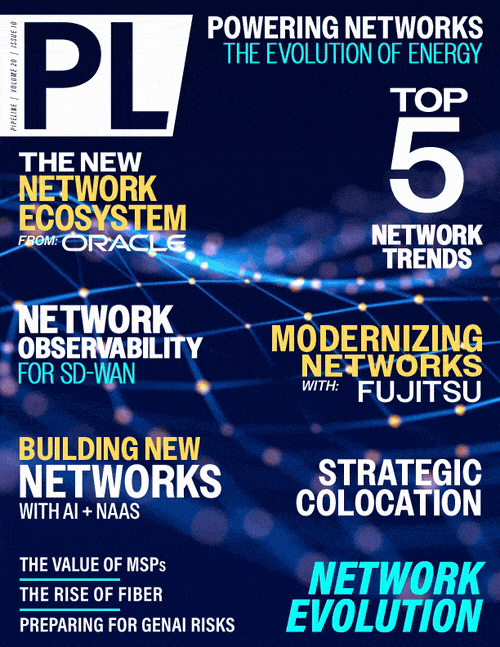Why Network Modernization is Key
to Real Transformation
By: Maureen Bundy
 Today’s business relies more and more on digital performance, speed and agility. To keep pace with these demands, communications service providers (CSPs) and network operators are continually
pressured to enhance customer experience with faster speeds, lower latency, and a new generation of innovative services.
Today’s business relies more and more on digital performance, speed and agility. To keep pace with these demands, communications service providers (CSPs) and network operators are continually
pressured to enhance customer experience with faster speeds, lower latency, and a new generation of innovative services.
Yet, at the same time, cost pressures and sustainability goals dictate the need for improved operational efficiencies, reduced power consumption, and lower carbon footprints. As CSPs attempt to strike a delicate balance between these seemingly conflicting imperatives, network transformation becomes ever more critical. The question is how can they achieve this transformation as quickly and cost-effectively as possible to maintain a competitive advantage? Network modernization and optimization efforts play an important part in meeting this challenge.
Reaching a Tipping Point
Over time, legacy network architecture becomes increasingly inefficient and outdated, making it costly and time-consuming to maintain and operate. The older equipment tends to be larger than today’s, occupying valuable floor space, as well as producing excessive heat and consuming large amounts of power. In fact, some network operators have seen energy cost increases outpace their sales growth by more than 50 percent in recent years.
These older components also tend to operate below their traffic capacity, reducing overall network performance. Likewise, legacy infrastructure at or near end-of-life often is no longer supported by the original manufacturer. This lack of support means there are no more software updates or component upgrades, which leaves CSPs at risk of security breaches and extended service outages, leading to lost revenue due to inability to meet service level agreements (SLAs).
Moreover, the inefficiency of operating legacy equipment prevents network operators from meeting energy efficiency standards and sustainability objectives. For example, just one rack of legacy equipment can generate as much as 14 metric tons of carbon dioxide each year. For those CSPs operating in locations where state and local governments have imposed laws aimed at reducing greenhouse gas emissions, failure to comply with emissions regulations can bring hefty penalties.
Laying a Path to Network Modernization
Ultimately, while the prospect of replacing this equipment may be intimidating, the consequences of doing nothing can be quite damaging to an operator’s profitability in terms of rising operating expenditures (OpEx) and missed SLA targets. Equally important, continuing to rely on legacy infrastructure results in poor network performance and the inability to adopt innovative new service capabilities, which translates to lost competitive advantage and customer churn.
Thankfully, network modernization does not have to be an all or nothing endeavor, and optimization can be accomplished gradually. When planning network modernization projects, however, the best practice is to begin with activities that will have the most impact in the least time, maximizing return on investment (ROI).
click to enlarge
Getting Over the Overlay Network
Traditionally, CSPs have relied on the use of overlay networks as a means to quickly deploy new technologies, functionalities, or services. The recognition of a need for change is widespread
among network operators, as illustrated in the chart above.




















